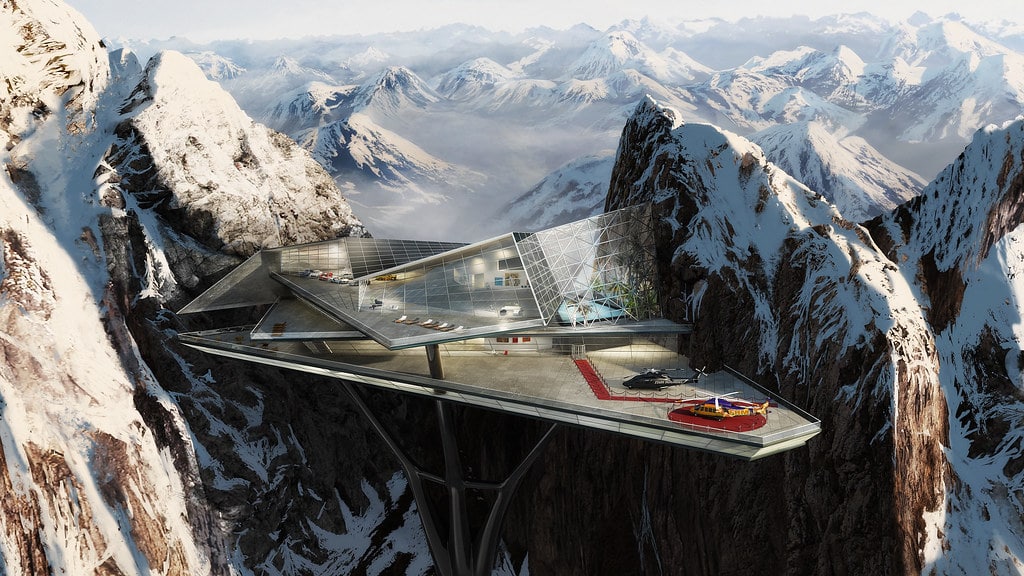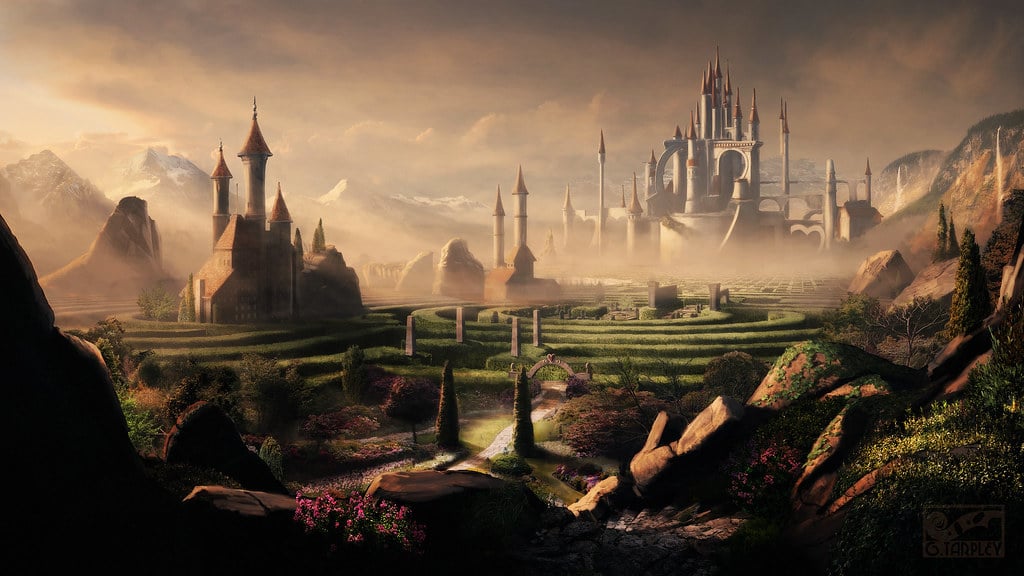
“Tony Stark’s Mt. Pilatus mansion, CGChannel May matte painting FINAL” by gordontarpley is licensed under CC BY 2.0
Are you amazed at watching movies with spectacular fictional settings? Do you want to know how they are built?
This original technique is known as Matte Painting. It is the visual representation painted in which realistic scenarios are recreated from different layers. Let’s know some of its characteristics!
Imagine how difficult it would be to recreate the settings of a movie like The Lord of the Rings or Star Wars in reality. The work would be very expensive and the cost would multiply exaggeratedly. Also, it would not be the same in the movie. Matte Painting manages to recreate these landscapes in a simpler way, although it must be said that it is also a great job carried out by qualified professionals.
Table of Contents
The traditional and current Matte Painting
Formerly this technique was carried out in a traditional way, being called “technique of painting on glass”. A realistic landscape was painted on a glass support and combined with real elements. The support was placed in front of a camera and an optical effect was produced, in such a way that the actors seemed to be located within the set.
Currently the process is digital in its entirety, being used not only in the cinema, but also in advertising, editorial design, video games, educational videos, posters … The star program for its development is Photoshop.
The Matte Painting Specialist
To be able to perform this technique it is essential that the artist have a series of skills such as: mastering perspective and proportions, knowledge of lighting, mastery of specific Matte Painting techniques, etc.
Important characteristics of Matte Painting

«CGChannel April 2010 Matte Painting» by gordontarpley is licensed under CC BY 2.0
It is very important that the proportions and perspective are correct (the smallest objects further away, the largest closest objects, objects in relation to the size of the actors, etc).
Color also plays an important role. The fact that it is a realistic color and that it is in line with the actual elements of the scene is key to a good job.
In addition, the approach from which it is done is essential.
It is a very meticulous job that requires a lot of practice to become a true professional.
Movies that used Matte Painting
Some of the first films that used Matte Painting were King Kong (1933) and Citizen Kane (1941), where we can observe a traditional use of Matte Painting, as we have talked about previously.
Other more modern films that have used this technique are: Star Wars (1977), ET (1982), The Lord of the Rings (1978), Avatar (2009), Transformers (2007) and the series Game of Thrones (2011 – 2019 ).
Matte Painting in video games
This technique is basic for the creation of video games, as it will allow us to transport ourselves and move freely through amazing landscapes, designed taking into account the smallest detail.
Famous Matte Painting Artists
One of the most prominent artists in this sector is Dylan Cole. This great American painter and conceptual artist, has developed the most famous scenes of the films The Lord of the Rings, Avatar, Alice in Wonderland, Maleficent and a long etcetera. Winner of several major awards, Cole thoroughly explains his Matte Painting work in the book D’artiste Matte Painting: Digital Artists Master Class, where he collaborates with various expert authors on the subject.
Another notable artist is Yanick Dusseault, who studied technical illustration at Sheridan College before joining the world of digital effects. His creations include movies such as Pirates of the Caribbean, Indiana Jones, Transformers, and Pinocchio. A true talent.
Programs in which Matte Painting can be done
In addition to the already mentioned Photoshop, there are other programs with which we can develop Matte Painting, such as They are Adobe After Effects or Maya and Zbrush from Autodesk.
These programs contain powerful modeling, simulation, texturing, rendering and animation tools so that you can develop all your creative ideas, translating them onto amazing invented landscapes.
I encourage you to look for a course to learn this beautiful way of creating scenarios.
And you, did you know the Matte Painting technique?


